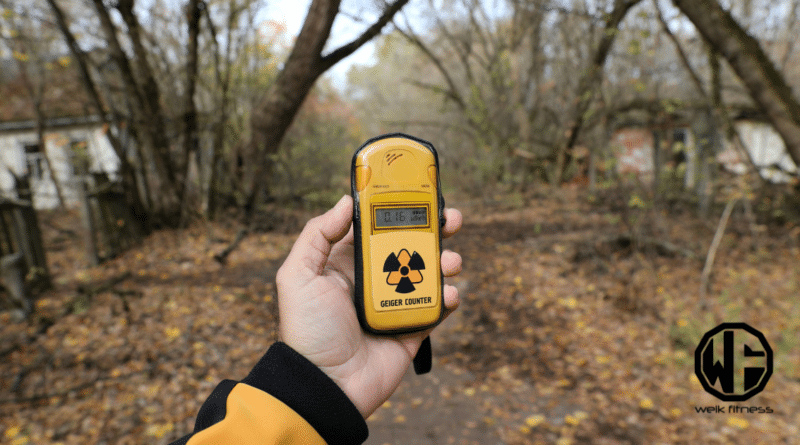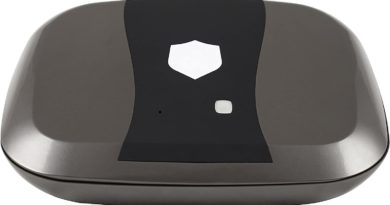Why Preppers Need a Geiger Counter for Radiation Safety
Listen, the world is a CRAZY place right now, and you need to pay attention to what’s going on. Have you ever considered grabbing a Geiger counter for radiation safety?
Think about it… What happens if no one in your town detected radiation? Let’s say there was a leak or something insane happened, like a nuke was dropped, and the nuclear fallout made its wall all the way to your area. Then what? (It sounds crazy, but go with me here)
Are you worried about radiation in an emergency? It’s a scary thought. Do you have a SHTF plan? Preppers need a Geiger counter to stay safe. This tool checks for harmful rays. A Geiger counter is vital for your prep kit.
Let’s explore how it can protect you and your loved ones. Having one gives peace of mind when facing the unknown. It’s a small device that could make a big difference in keeping your family safe.
Don’t wait until it’s too late — add this key item to your supplies now.
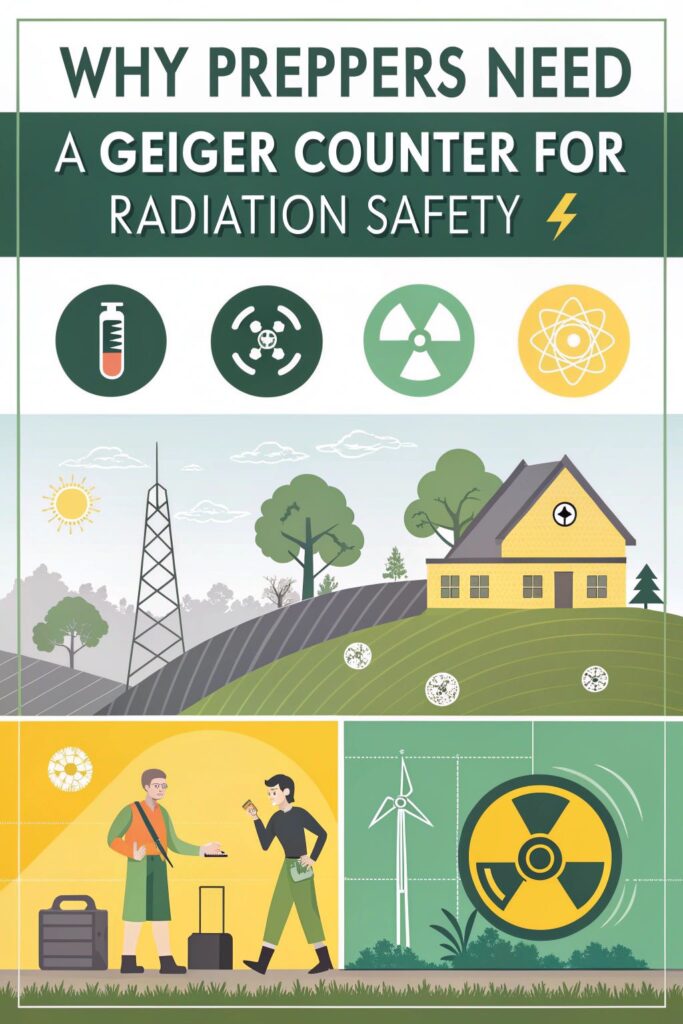
Table of contents
Key Takeaways
- Geiger counters detect alpha, beta, gamma, and X-rays, helping preppers spot hidden radiation dangers.
- Key features for prepper Geiger counters include portability, durability, real-time readouts, and alarm systems for high radiation levels.
- These devices can detect nuclear fallout, provide early warning of radiation threats, and help avoid contaminated areas.
- Geiger counters allow users to monitor food, water, and surroundings for radiation, ensuring safety in uncertain times.
- The yearly radiation limit for workers is 5,000 mrem, while regular people should stay under 720 mrem.
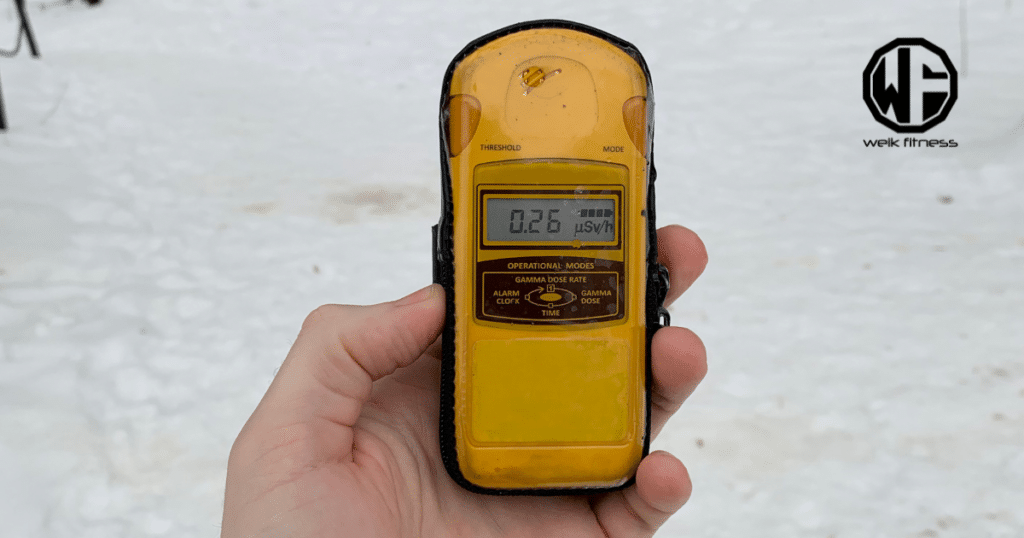
What is a Geiger Counter?
I use a portable radiation detector (Geiger counter), which is an instrument used to detect and spot harmful radiation (this is the exact model I have).
This handy tool detects alpha, beta, gamma, and X-rays by ionizing gas in a special tube. Hans Geiger and Walther Müller created it in 1928.
The radiation detection device needs 400-900 volts to run. It shows readings in counts per minute or dose rates. A mix of gases inside helps stop discharges fast.
Geiger counters are key to safety in risky areas. They alert me to hidden dangers from nuclear sources and radioactivity. The tool is portable, so I can easily check food, water, and my surroundings.
It gives real-time data, helping me make quick choices. With clear numbers, I know if I’m in a safe zone or need to leave fast (which you should have a bug-out bag ready at all times).
Types of Radiation Detected by a Geiger Counter
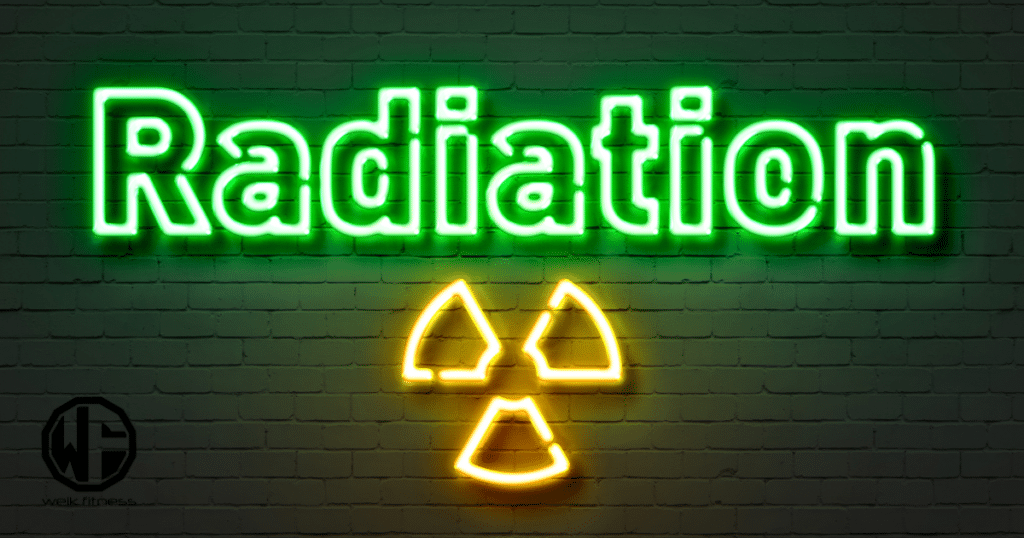
Geiger counters can spot different kinds of radiation. They pick up alpha particles, beta particles, and gamma rays.
1. Alpha Particles
Alpha particles are the first type of radiation we need to discuss. They’re helium-4 nuclei shot out from radioactive stuff. I’ve learned these particles can’t travel far, but they’re still risky. They ionize gas atoms inside a Geiger tube, making it a key tool for detection.
The first Geiger counter was made just to spot these alpha particles. That’s pretty cool!
I know preppers need to watch out for alpha radiation. It can’t go through skin, but it’s bad news if breathed in or swallowed. A good Geiger counter helps spot this threat fast. It’s a must-have for checking food, water, and air in a crisis.
With this tool, I can stay safe from hidden dangers.
2. Beta Particles
Beta particles are tiny bits of radiation. They’re 8,000 times smaller than alpha particles. I’ve seen how these particles work in a Geiger counter. They zip through the gas inside the tube and create electric pulses.
This is how the counter spots radiation.
I use my Geiger counter to measure radiation in microSieverts per hour. It’s a key tool for us preppers. Beta particles can pass through some materials, so it’s crucial to detect them.
Knowing their levels helps me stay safe in risky areas.
3. Gamma and X-rays
Gamma and X-rays are next on our the list. These high-energy waves can pass through most materials, making them the most dangerous type of radiation. I’ve watched videos on how they can penetrate thick walls and even lead shielding.
It’s crucial for preppers to detect these invisible threats. A good Geiger counter will quickly detect gamma rays and X-rays, alerting them to danger. This gives them time to reach safety or take protective measures.
In a nuclear event, knowing your radiation exposure could save your life.
Key Features of a Geiger Counter for Preppers
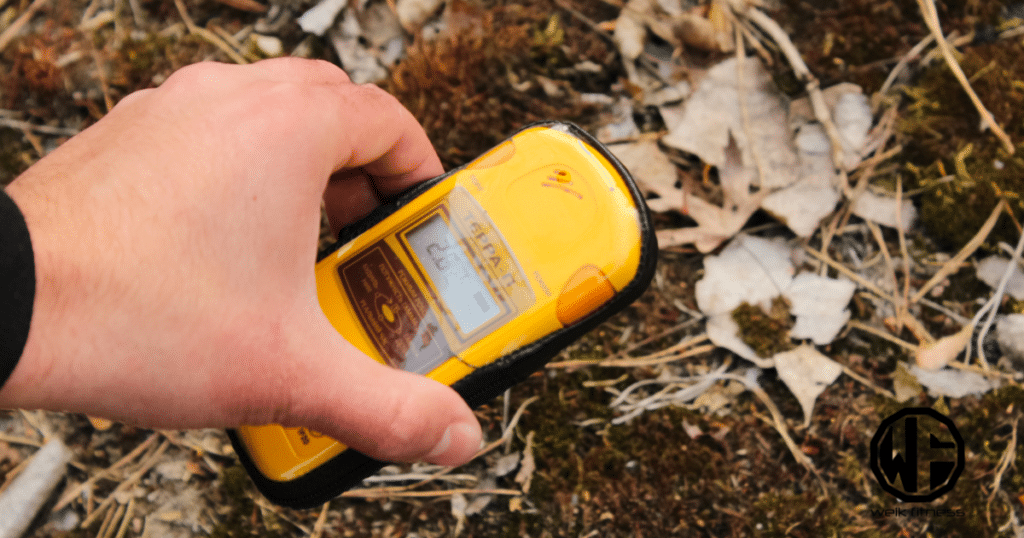
A good Geiger counter for preppers should be tough, easy to carry, and show readings fast. It should also warn you when radiation gets too high.
1. Portability and Durability
I’ve seen some great Geiger counters for preppers. They’re small and rugged. The GQ GMC-300S is the model I have and weighs just 4 ounces. It’s light enough to carry anywhere. The NUKAlert is even smaller (and something I’m considering also picking up since I’m not too far from the Limerick nuclear power plant here in PA).
It fits on a keychain. These tools are built to last. They can handle rough use in the field. You won’t have to worry about them breaking easily. Modern designs focus on making these devices portable and strong.
This means you can take them wherever you go. They’ll work in any situation you might face.
2. Real-Time Readouts
I really appreciate my Geiger counter’s instant readouts. They display radiation levels immediately, without delay or uncertainty. The screen illuminates with distinct figures, and I can determine an area’s safety within moments.
This rapid information enables me to make quick decisions in potentially hazardous locations.
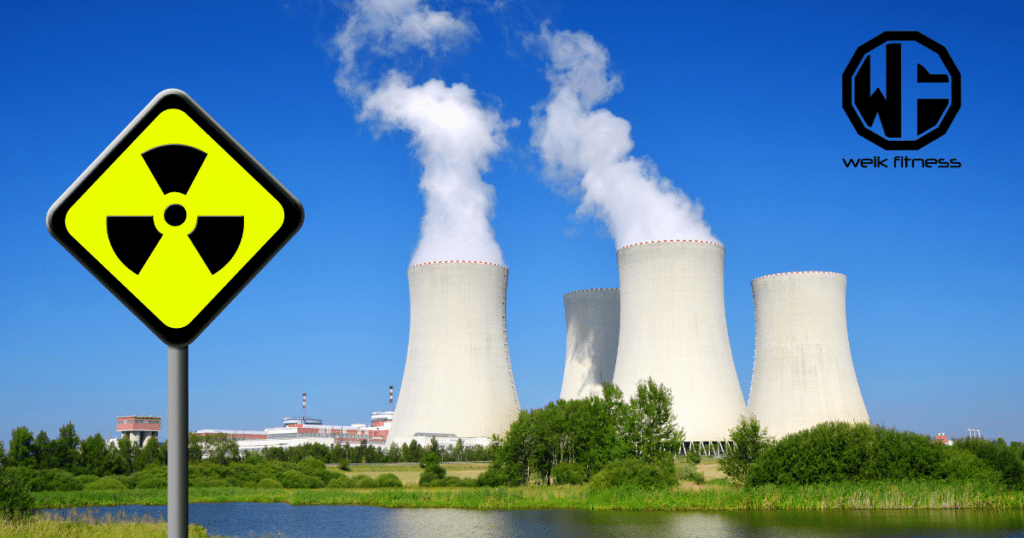
Digital screens make interpretation straightforward. The figures are large and vivid. I don’t require specialized knowledge to comprehend them. If levels become excessive, some devices sound alarms or flash warnings.
This alerts me to exit promptly. Immediate data ensures my safety in unpredictable situations.
3. Alarm Systems for High Radiation Levels
Geiger counters with alarm systems are vital for preppers. These tools alert us to high radiation levels fast. Most modern devices have built-in alarms. They beep or flash when radiation goes above safe limits.
This quick warning lets us take action right away.
I’ve found some counters with great alarm features. The GQ GMC-300S, priced at $68, is a top pick. It has clear alerts for danger zones. For $129, the GQ GMC-320 Plus offers more data options.
The NukAlert, which costs $169, uses sound ticks to signal radiation strength. These alarms help keep people safe in risky areas.
Benefits of Using a Geiger Counter for Radiation Safety
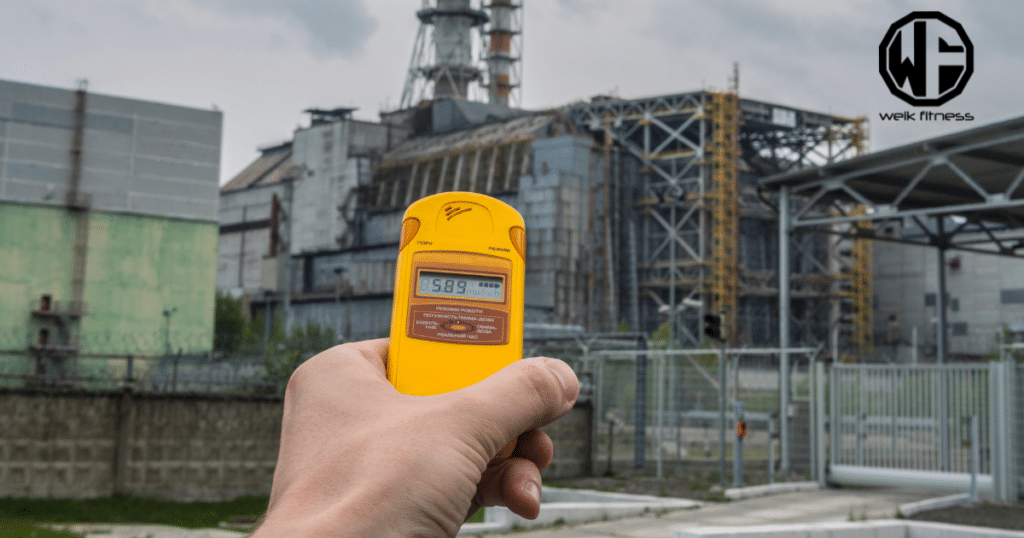
A Geiger counter helps preppers stay safe from hidden radiation dangers. It can spot nuclear fallout and warn you of risky areas before you enter them.
1. Detecting Nuclear Radiation from Nuclear Fallout or Electromagnetic Pulse Attack
I’ve used a Geiger counter to spot radiation. With the drones we’ve had in Pennsylvania and the notion that they’re looking for radioactive material, I’ve used my unit to test the air both inside and outside my house.
In the event of an EMP attack, if the grid goes down, the nuclear power plant south of me could cause some issues.
It’s a must-have tool for preppers. Nuclear fallout is the radioactive dust that falls after a nuclear blast. My Geiger counter picks up this danger fast.
RELATED: CBRN Gas Mask — A Key to Survival for You & Your Family
When radiation is high, it beeps and shows numbers. This quick warning lets me take cover or leave risky areas immediately. I’ve tested my Geiger counter on small radiation sources. It works great and gives me peace of mind.
The MIRA Safety Geiger-2 Counter is perfect for finding low radiation. This unit is awesome to keep in your bug-out bag. It’s light and tough. The device gives real-time readings of radiation levels. If they get too high, an alarm goes off.
This feature is key for staying safe in a nuclear event. With this tool, you can check food, water, and my surroundings for harmful radiation.
2. Early Detection of Radiation Threats
A Geiger counter helps me spot radiation threats early. It’s a key tool for preppers. The device picks up ionizing radiation fast. I can check my surroundings in real-time. This quick detection lets me act fast if levels spike.

The counter shows readings in counts per minute, which I use to track changes in radiation. The EPA’s RadNet also helps monitor levels. With these tools, I stay ahead of potential dangers.
Early warning gives me time to protect myself and my family.
3. Protection and Radiation Detector Against Contaminated Environments
I use my Geiger counter to stay safe in risky areas. It alerts me to hidden dangers from radiation in the air, water, and soil. This tool helps me avoid hot spots and contaminated zones.
I can check my food and supplies for safety, too. With real-time readings, I make smart choices about where to go and what to touch. My Geiger counter gives me peace of mind in uncertain times (like with these drones that the government doesn’t seem to know what they are and the fact that nuclear threats are being tossed around like hot potatoes overseas).
Pros know radiation limits matter. The yearly maximum for workers is 5,000 mrem, while regular people should stay under 720 mrem. My counter helps me track my exposure and stay within safe levels.
I can spot trouble quickly and escape before I’m in danger. This gadget is a must-have for any serious prepper’s kit.
4. Measurement and Monitoring Food, Water, and Surroundings
A Geiger counter helps me check my food, water, and surroundings for radiation. I use it to scan items before eating or drinking. This tool spots hidden dangers from nuclear accidents or disasters.
It’s key to staying safe in uncertain times.
My Geiger counter also tracks radiation in my area. I can find safe zones and avoid hot spots. This info is vital for my family’s health. With this device, I’m ready to face radiation threats head-on.
A Handheld Portable Geiger Counter is a Must for Monitoring a Radioactive Area
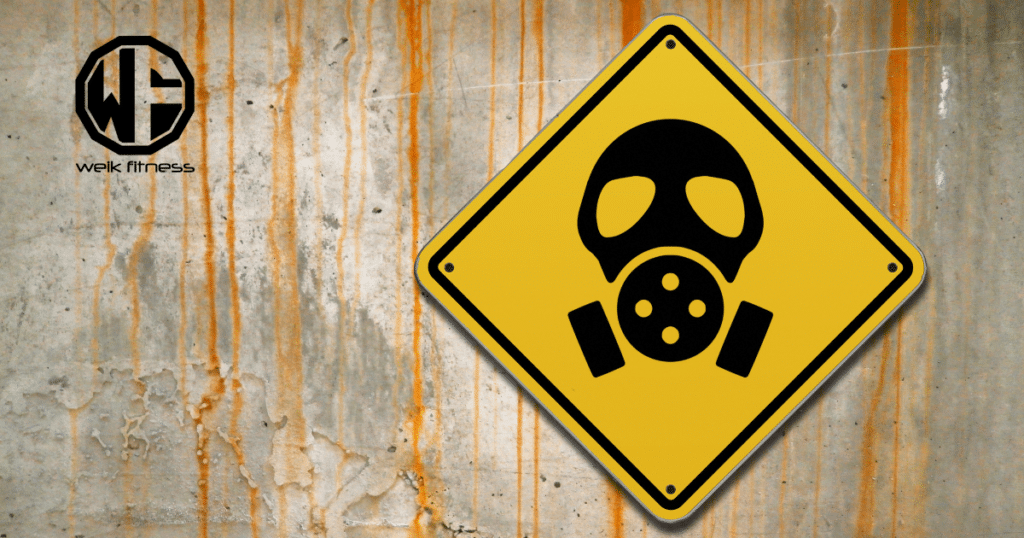
Geiger counters are vital tools for preppers. They help us stay safe from hidden radiation dangers. We can check our food, water, and surroundings quickly. These devices give us peace of mind in uncertain times.
With a Geiger counter, we’re ready to face any radiation threat head-on. In this article, I recommend some units. I highly recommend that you check them out and pick one up to have on hand with your preps. Stay safe!
Resources
- https://www.nrc.gov/reading-rm/basic-ref/students/science-101/what-is-a-geiger-counter.html
- https://www.mirasafety.com/blogs/news/dosimeter-geiger-counter-guide?srsltid=AfmBOorPT31pu8hy3VO5EgXap8bh2JNXilvc42fjInDwpxFPfTPjXmls
- https://nationalmaglab.org/magnet-academy/history-of-electricity-magnetism/museum/geiger-counter-1908/
- https://science.howstuffworks.com/geiger-counter.htm
- https://www.mirasafety.com/blogs/news/history-of-the-geiger-counter-radiation?srsltid=AfmBOoqB-dz21b3z3ZZUt1COHcrFcTbf96VIVB-LGKsljnLNWMMIXH5z
- https://trueprepper.com/best-geiger-counter/
- https://canadianpreparedness.com/blogs/news/radiation-detectors-101-what-they-are-and-why-you-need-one-for-emergency-preparedness?srsltid=AfmBOoqPGpva5AvCm2Axo52G9P0eqKNzNyFT1EpwPY2jpr-YPUHRW3Zq
As a side note to close out this article, if you want to support our website and are in need of any tactical gear (or any product for that matter), anything you purchase using our links below will provide us with a small commission. We don’t charge for our free content and our goal is to keep it that way. We don’t have a Patreon account to put things behind a paywall, nor do we sell pics of our feet on OnlyFans.
If you choose to use the links below and make a purchase (at no additional cost to you), we greatly appreciate your support as it helps us continue to publish free content (like this article) on our website:
- Optics Planet (use code SAS5 at checkout for 5% off)
- Amazon
We have also partnered with CCW Safe. It’s the concealed carry coverage that I personally have for myself and my family in the event we need to defend our lives. Feel free to use our CCW Safe link to sign up and get some coverage to protect yourself and your family.
Also if you have a product you would like us to check out and potentially review, please contact us and let’s discuss.


